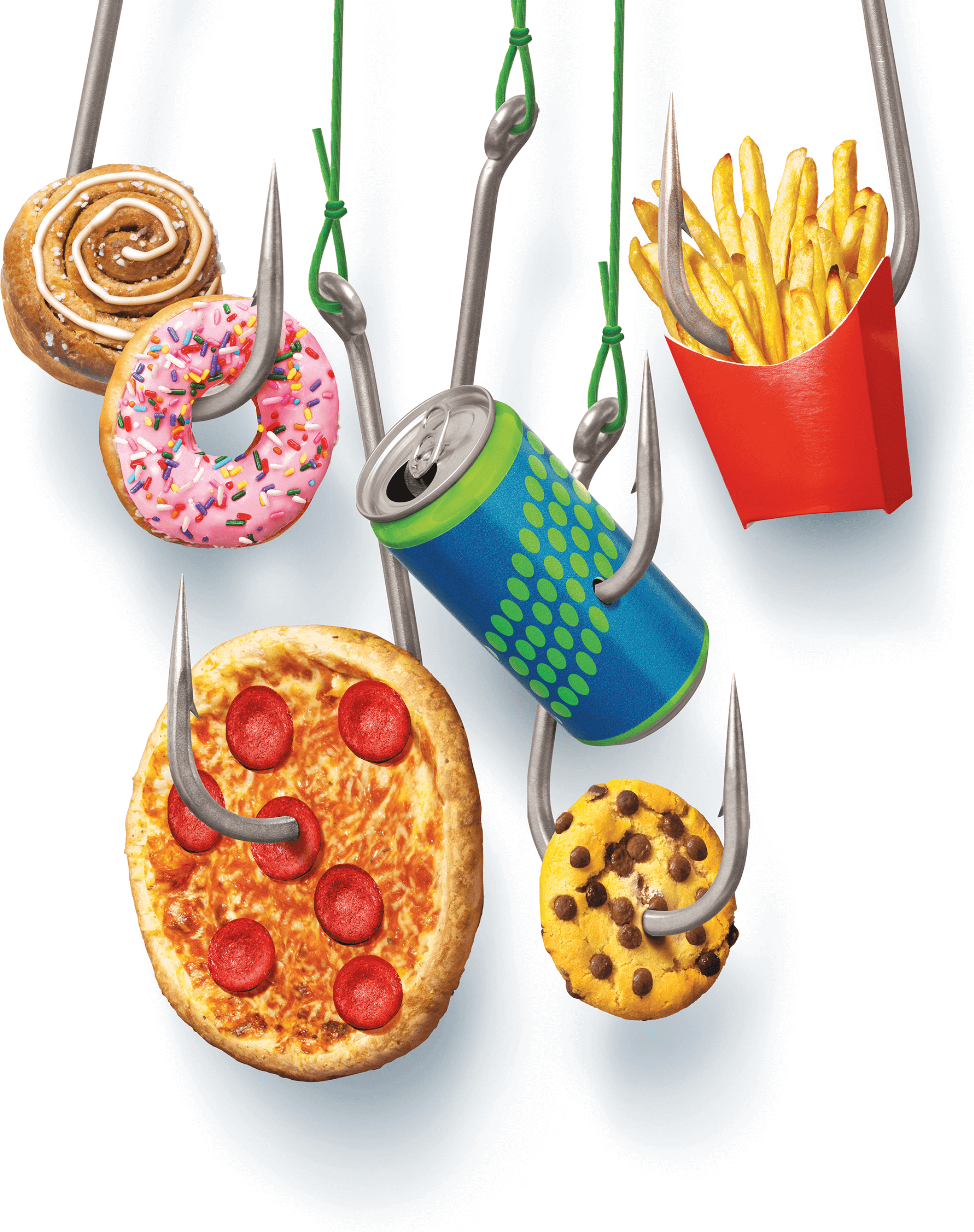Your Health
ARE YOU ADDICTED TO JUNK FOOD?
1 in 8 older adults are hooked on ultraprocessed food. Here’s how these sugar-and-fat bombs are affecting your brain and body

Michael Prager is addicted to junk. Junk food, that is. After he eats a frozen pizza, candy bar or packaged pastry, his head will throb. A sheen of sweat will appear on his face and body. Then he’ll begin to crave it again.
Prager, 65, a retired journalist and author in Arlington, Massachusetts, is not alone. One in 8 adults ages 50 to 80 show signs of addiction to ultraprocessed foods, or what we call junk food—sugary soda, salty chips, fatty fast food, for example—according to a 2023 report from the National Poll on Healthy Aging, sponsored by AARP. Nearly half of older adults experience at least one symptom of junk food addiction, such as intense cravings, an inability to stop eating once they start, or withdrawal symptoms when they try to resist.
“In the same way that taking that first sip of alcohol can prime [some people] to want more, we see that same thing with these foods,” says Ashley Gearhardt, director of the Food and Addiction Science & Treatment Lab at the University of Michigan.
ADDICTIVE BY DESIGN
The term “ultraprocessed” refers to foods that have been altered by the addition of super-flavoring agents, preservatives, food dyes and other additives, and refined fats and carbohydrates that have been stripped of fiber and other nutrients to improve texture and appearance. From candy bars to chips, from cookies to pastries, these foods have been created in factory settings to keep you coming back for more.
And they’re cheap. “Healthy food is so much more expensive, and there are people who can’t afford it,” says addiction specialist Nora Volkow, M.D., director of the National Institute on Drug Abuse, part of the National Institutes of Health (NIH).
THE ULTRAPROCESSED BODY
Almost 60 percent of the calories consumed by Americans come from ultraprocessed food. That figure helps to explain why the U.S. has the world’s highest obesity rate.
A study this year found that even when people eat the same number of calories, those who eat ultraprocessed foods over high-fiber foods absorb more calories—an average of 116 additional calories per day. One reason: Our gut microbiomes consume calories, too, but ultraprocessed foods are digested so quickly that their calories never make it to the large intestine, home of the microbiome.
“It only takes about 200 or 300 extra calories a day to see risk for excessive weight gain and diet-related disease,” Gearhardt says. These foods have also been linked to increased chronic inflammation, the underlying condition behind obesity, heart disease, Alzheimer’s, diabetes and more.
YOUR BRAIN ON JUNK FOOD
Because ultraprocessed foods are digested so quickly, researchers in the field say the brain’s response to a candy bar or potato chips is more like what we see with nicotine and alcohol. But overcoming a junk food addiction is possible. Support groups including Overeaters Anonymous may help, Gearhardt says. Cognitive behavioral therapy can help those addicted to junk food find useful coping methods for overcoming their cravings, and nutritional counseling can help map out healthy alternatives to ultraprocessed foods.
And then there’s abstinence. That’s what eventually worked for Prager, who cut out refined sugar and flour in addition to seeking therapy for his addiction. “My life without [junk food] is just so much better,” he says. “When I avoid it, I’m happier.”
Rachel Nania is a senior writer and editor for AARP.org covering health care.
YOUR JUNK FOOD SURVIVAL PLAN
These small steps can make a big impact on your intake of ultraprocessed foods
WAIT IT OUT. Like a wave, cravings build, then subside, says psychologist Shenelle A. Edwards-Hampton. Over time, the waves will get lower.
AVOID TRIGGERS. Become aware of what environments or situations trigger your food cravings, such as binge-watching TV, and if possible, avoid them.
PURSUE CONVENIENCE. Packaged doesn’t have to mean unhealthy. Lentils come pre-steamed; brown rice can be cooked in one minute in the microwave.
DON’T SKIP MEALS. Hunger will make you more vulnerable to cravings. Aim for three minimally processed meals a day to reduce binges and mindless eating.